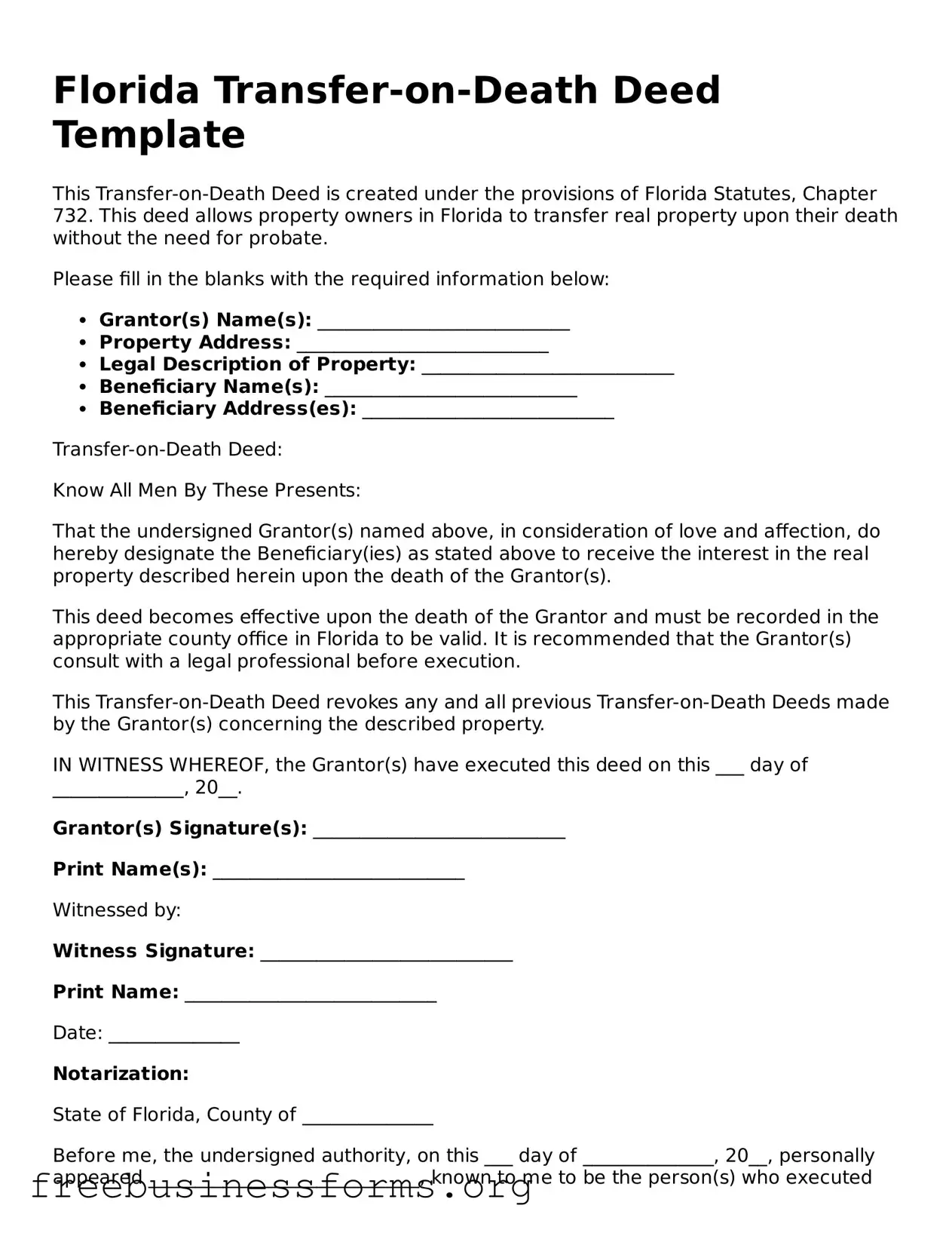Florida Transfer-on-Death Deed Template
This Transfer-on-Death Deed is created under the provisions of Florida Statutes, Chapter 732. This deed allows property owners in Florida to transfer real property upon their death without the need for probate.
Please fill in the blanks with the required information below:
- Grantor(s) Name(s): ___________________________
- Property Address: ___________________________
- Legal Description of Property: ___________________________
- Beneficiary Name(s): ___________________________
- Beneficiary Address(es): ___________________________
Transfer-on-Death Deed:
Know All Men By These Presents:
That the undersigned Grantor(s) named above, in consideration of love and affection, do hereby designate the Beneficiary(ies) as stated above to receive the interest in the real property described herein upon the death of the Grantor(s).
This deed becomes effective upon the death of the Grantor and must be recorded in the appropriate county office in Florida to be valid. It is recommended that the Grantor(s) consult with a legal professional before execution.
This Transfer-on-Death Deed revokes any and all previous Transfer-on-Death Deeds made by the Grantor(s) concerning the described property.
IN WITNESS WHEREOF, the Grantor(s) have executed this deed on this ___ day of ______________, 20__.
Grantor(s) Signature(s): ___________________________
Print Name(s): ___________________________
Witnessed by:
Witness Signature: ___________________________
Print Name: ___________________________
Date: ______________
Notarization:
State of Florida, County of ______________
Before me, the undersigned authority, on this ___ day of ______________, 20__, personally appeared _____________________________, known to me to be the person(s) who executed the foregoing instrument, and acknowledged to me that he/she/they executed the same for the purposes and consideration therein expressed.
Given under my hand and seal this ___ day of ______________, 20__.
Notary Public Signature: ___________________________
Print Name: ___________________________
My Commission Expires: ______________
